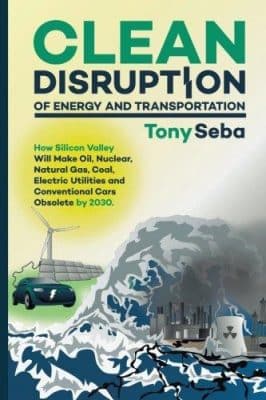
Last year’s Barcamp started with a panel discussion, in which industry experts attempted to come up with an answer to the question: In what form will the next disruptions in the industry come? According to Martin Rühl, representing the Stadtwerke Union Nordhessen, “Renewables are now the future.” Daniel Bannasch, there for MetropolSolar, was also sure that the reign of renewables would no longer be held back, saying that with a 1 m² photovoltaic cell, an electric car could run for 1,000 kilometers, or 621 miles, per year. This potential had been the fascination of big players on the market for a long time. The goal of fully renewable energy was looking like a real possibility, as evident in the creation of new business fields. Policymakers, on the other hand, seemed to be preventing rather than promoting the switchover to renewables, especially in Germany, a point that clearly resonated with the audience.
After establishing that they did not expect the clean energy transformation to occur from the top down, the participants discussed how the clean energy transformation could be achieved at the level of the people. Julian Kretz, from Next Kraftwerke, pointed out that a great deal of responsibility for making it happen lay with regional utility providers and citizen-financed renewable energy cooperatives. These players especially should keep up with the increasing complexity of our age and work more with programmers and start-ups to create digital solutions for real-world problems.
Disruptive technology: A disruptive technology or disruptive innovation is an innovation that displaces an existing, highly successful technology, product or service. [retrieved and translated from the German-language Wikipedia, Jan. 29, 2018]
Blockchain: A blockchain […] is a continuously growing list of records, called blocks, which are linked and secured using cryptography. Each block typically contains a hash pointer as a link to a previous block, a timestamp and transaction data. […] Blockchains are secure by design and are an example of a distributed computing system with high Byzantine fault tolerance. Decentralized consensus has therefore been achieved with a blockchain. […] The first blockchain was conceptualized in 2008 by an anonymous person or group known as Satoshi Nakamoto and implemented in 2009 as a core component of bitcoin, where it serves as the public ledger for all transactions. [retrieved from Wikipedia, Jan. 29, 2018]
Bitcoin: Bitcoin is a cryptocurrency and worldwide payment system. It is the first decentralized digital currency, as the system works without a central bank or single administrator. The network is peer-to-peer and transactions take place between users directly, without an intermediary. [retrieved from Wikipedia, Jan. 29, 2018]
From blockchain to solar coins
On the second day of the Barcamp, Bitcoin consultant Britta Aufermann shed some light on the mysterious concept of a blockchain. Her basic message was “Germany has been sleeping when it could have been taking part in the global activity of bitcoin trading.” There is a huge opportunity for the energy industry to improve itself through digital extension. One possibility would be the introduction of solar coins, or, especially, the coupling of blockchain technology with photovoltaics, which would significantly lower consumption of the energy resources being used.
In addition, the effects of the new German law to establish a digital energy infrastructure were addressed. Marek Seeger, information security manager at SMA, said that the law was, in principle, up to standard in terms of security, but forcing the use of Smart Meter Gateways would be detrimental to the implementation of similar technologies in the future. Indeed, the biggest complaint has been that the regulation on the gateways is not sufficiently clear. Right now, estimating the concrete impact of digital technologies such as blockchain systems and artificial intelligence is difficult.
Johanna Gampe, a lecturer at the University of Kassel, held a session to discuss which hypes in the digital world could be taken advantage of to promote renewables and, more importantly, how. One of her examples was the use of viral marketing through social media, which could allow renewable energy cooperatives to reach many more people of all different ages.
Energieblogger
Despite being a registered association, Energieblogger sees itself as a loosely connected group of active bloggers who inform the internet about anything related to renewable energy. They also co-organized this Barcamp. H2-international represents the hydrogen and fuel cell division of Energieblogger.
Recommended reading: Clean Disruption of Energy and Transportation: How Silicon Valley Will Make Oil, Nuclear, Natural Gas, Coal, Electric Utilities and Conventional Cars Obsolete by 2030, by Tony Seba [ISBN: 9780692210536]
Written by Annika Linke and Sven Geitmann
see also: https://en.sma-sunny.com/en/blog-parade-disruptions-in-the-energy-industry/

























0 Comments